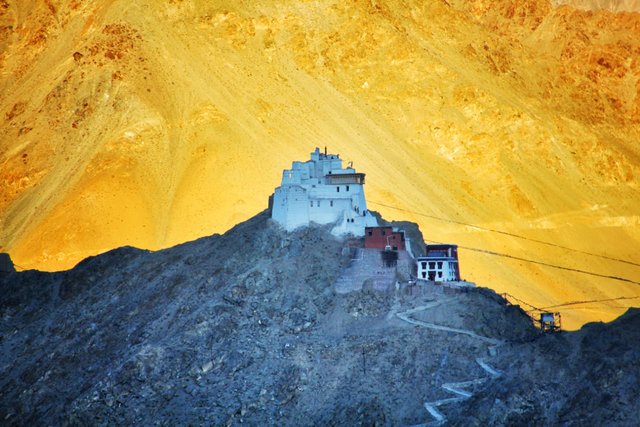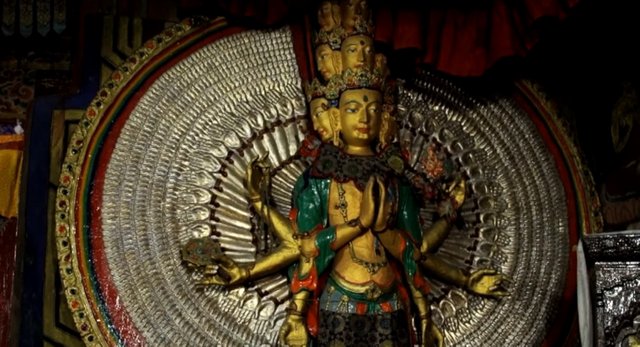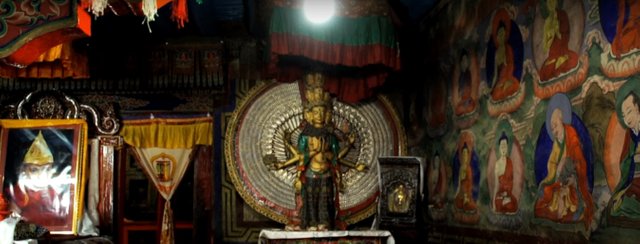
Description: Sankar Monastery stands still in seclusion and solitude at the end of a 3km long stretch from Leh. The abode of the head of the Ladakh Gelukpa, the monastery belongs to the yellow hat sect. It is somewhat adventuresome to climb up the hilltop where the Sankar Gompa is situated. Unlike other Ladakh monasteries, the Gompa is adorned with paintings on four sides,Well worth hunting down in the upper valley of Leh with a moving and spiritual atmosphere that seems ancient.
Only 20 monks at most live here, and only a few permanently, so visiting hours are limited to early morning and evening. The place is well lit, so an evening visit is worthwhile. Climbing the steps one reaches the double doors leading into the dukang (du khang) or assembly hall.

Three green drums are on the right of the door under which is the place of the Gyeskos. The wall and entry door are richly painted. Upstairs is the Dukar Lhakang ("residence of the deity") or inner sanctuary.
The Deity :

Above the Du Khang stands the Gompa's principal deity, Tara, in her triumphant, 1,000 armed form as "Dukkar", or "Lady of the White Parasol", presiding over a light,

airy shrine room whose walls are adorned with a Tibetan calendar and tableaux depicting "dos and don'ts" for monks - some very arcane indeed. Another flight of steps leads to the Gompa library and, eventually, a roof terrace with fine views towards the north side of Namgyal Tsemo hill and the valley to the south.
The walls are painted with a Tibetan calendar, mandalas and rules for the monks. Above the wooden stairs can be seen the rooms of the Abbot, guest rooms and the library.
A lama from Sankar Monastery visits the mid-sixteenth century fort built by Tashi Namgyal at Namgyal Tsemo, the peak above Leh every morning and evening to maintain the temples associated with the fort and light the butter-lamps.